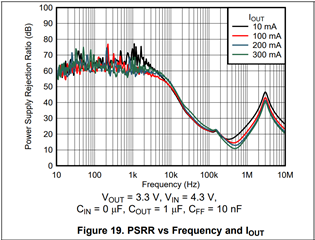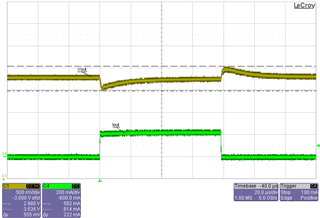Hi,
Good day.
Our customer is using the TPS7A25 and they have a ringing issue, kindly see below the description:
I am using two separate 3V3 fixed LDOs from the TPS7A25 series to generate two 3V3 rails - one is used by an nRF52 IC, RTC, other small ICs etc. The other is used by a magnetic buzzer and I am seeing ringing on this both input & output when this buzzer is used. However strangely it doesn't happen when it first turns on, but about 15us later.
What might be causing this ringing? It is relatively small on the 3V3, but on the input it is very large, 1V peak to peak which will cause problems for our circuit. What steps can be taken to reduce/eliminate this?
The input & output caps are both 2.2uF 0603 X7S 10% 25V by Murata. The buzzer is driven with a 4kHz PWM and takes about 160mA during the ON cycle.
Thank you for your help - this is for a smart lighting product soon to be introduced
Looking forward to your feedback. Thank you.
Regards,
Cedrick
-
Ask a related question
What is a related question?A related question is a question created from another question. When the related question is created, it will be automatically linked to the original question.






